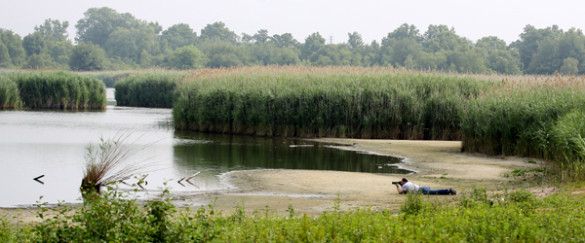Some Jamaica Bay Residents Resent Bay Restoration While Their Homes Are Still Damaged

The federal government is pumping millions of dollars into the restoration of Jamaica Bay following the devastation wrought by Superstorm Sandy. But some local residents who live nearby are growing angry that their needs are being ignored. A report by Reuters is noting that local residents, fed up with updated post-storm building codes and the attached fees, have grown resentful of all the dollars pouring into the nature reserve.
Federal and city financial activity at Jamaica Bay is soaring in recent months. In August, we reported that the Department of the Interior and the National Parks Service is spearheading an effort to make parks located near urban environments, like Jamaica Bay, into major hotspots for outdoors activity. The hope of the effort is to put places like Jamaica Bay on par with national parks like Yellowstone and Yosemite. We also reported on the formation of an ambitious new multi-million dollar research project that will center around the natural storm defense barriers of Jamaica Bay, which include tidal wetlands, salt marshes and dunes. The goal of this project is to replicate these natural barriers in other areas.
According to the Reuters report, all of this activity is brewing anger in the surrounding Jamaica Bay community:
As restoration projects at Jamaica Bay get underway, using volunteer help and outside funding, they are stirring feelings of resentment among some local residents.
They say they have more pressing concerns than restoring the bay and protecting against future storm surges. Private homes and commercial buildings in the area remain damaged. Some residents are struggling to meet new Federal Emergency Management Agency building codes, access money for repairs and even determine if their home is up to code. Private inspections “can cost $500-600 or more for a single family dwelling,” [Hilarie] Williams said.
For community members, the convoluted process to access funds feeds confusion and resentment about the bay restoration project. While most community members are looking for compensation for their losses, they see money going instead to the restoration of the bay.
Still, many Jamaica Bay residents know that living by the water brings risks, including Don Riepe, the Northeast Chapter Director of the American Littoral Society and Broad Channel resident:
“I was always aware that [a storm like Sandy had the ] potential of happening,” he said. “It wasn’t a great surprise to me.” In four or five previous storms he lost heat or power “but nothing like Sandy. I lost the heat, the electricity, all the furniture” this time, he said.
Riepe sees his neighbors responding in a variety of ways – jacking up small houses in some cases, rebuilding and hoping for the rest or simply leaving for good.
But the story of Broad Channel and other communities in the area should be a wakeup call to other vulnerable coastal regions, he says.
“We’ve built in areas we shouldn’t have. I shouldn’t have a house on the bay, or if I do I should be prepared to lose it,” Riepe says.”You’re living on the bay, you take the risks.”



